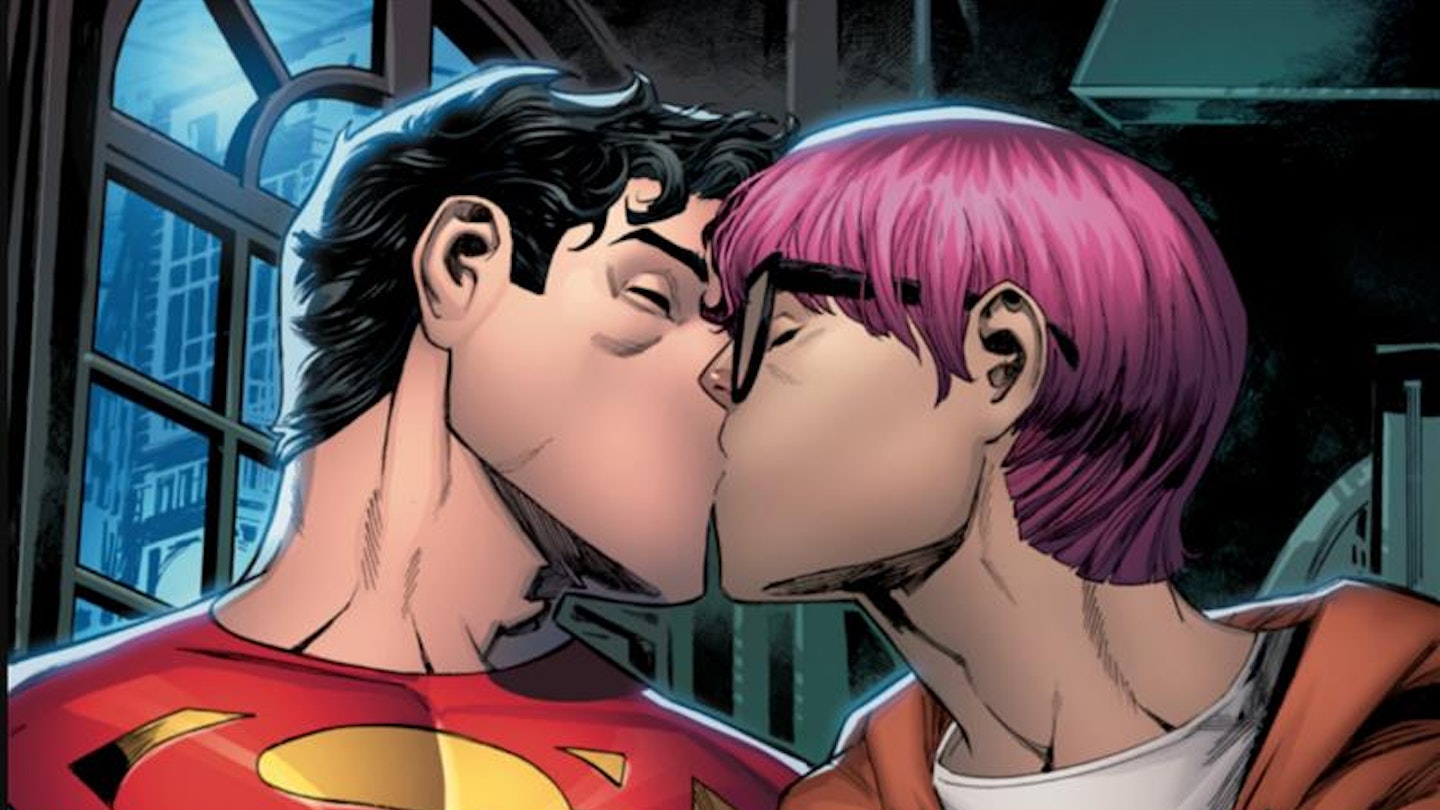In a DC universe where the last survivor of the planet Krypton lands in America and grows up with a destiny to save the world from evil by flying around in a cape and stopping runaway trains with his bare hands etc, it really isn’t that comparatively earth-shattering to learn that Superman’s son is bisexual.
Young Jon Kent has been busy following in his father’s footsteps fighting wildfires caused by climate change, scuppering a high school shooting, and protesting against the deportation of refugees. So far, so standard son-of-a-super-hero behaviour. And I imagine many of you reading this are beginning to zone out in the way you do when your kid starts talking to you about Roblox. But bear with me, because for queer teenagers Jon Kent is more than a comic book character, he represents a burgeoning representation of the LGBTQ+ experience in mainstream media. And I can’t tell you how brilliant this is.
When I was 15, back in the late 90s, and coming into a knowledge of my own sexuality, young gay role models were practically non-existent. I remember reading Jeanette Winterson’s Oranges Are Not The Only Fruit in GCSE English and excitedly highlighting every other word. Even though the main character came from a completely different world to my own there was so much I could relate to. She was a girl who liked girls! And that was enough for me.
My gay best friend and I were desperate to see ourselves reflected back in the books, films and magazines we consumed, and we’d throw our allegiance whole-heartedly behind even the most tenuous LGBT story line in soap operas and devour copies of Gay Times and Diva Magazine. It was all we had.
When the coming-of-age film Beautiful Thing came out in 1996 we got hold of it on video and must have watched it 20 or 30 times. We bought the soundtrack on tape and my GBF Will played it at full volume out of his red Ford Fiesta as we drove into the Sixth Form carpark in the mornings. These queer cultural moments meant so much to us, and we were endlessly thirsty for more.
Fast forward 25 years (yikes) and story lines featuring LGBTQ characters abound across all genres of TV from soaps to Strictly. Meanwhile shows such as Sex Education have issues about gender and sexuality front and centre, and there’s a rarely seen equality in the amount of straight and gay, err, passion, we see on screen. I’m looking forward to the release of Heartstopper on Netflix soon. Based on a smash hit graphic novel it explores the relationships between queer teenagers at Secondary School. Shows such as these are so important not just for the LGBTQ+ young people they represent, but for everyone else who needs to learn that being queer isn’t weird, and it isn’t particularly cool either – it’s both and neither of these things just like being straight is.
So suffice to say, Superman junior falling for a gorgeous pink-haired boy called Jay Nakamura came as no surprise to me personally. Batman’s sidekick Robin came-out as queer earlier this year, joining a growing community of Super Queeros from Catwoman to Marvel’s Hercules.
I’m delighted that kids are coming across different iterations of love and identity in their favourite comic franchises. It’s this kind of across-the-board representation that will help stamp out homophobia in schools. and make our own children feel that being different could be their superpower.
